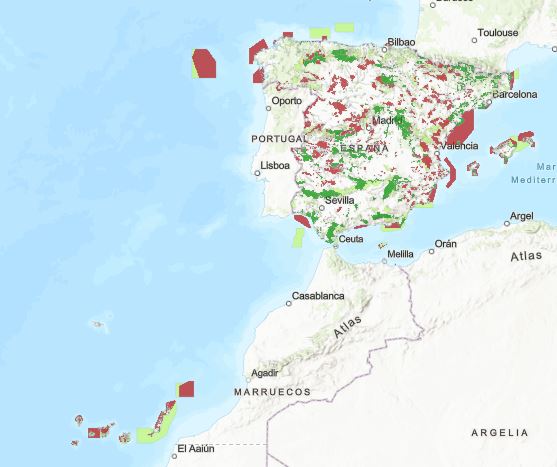Nature protection
Ministry for the Ecological Transition and the Demographic challenge
Definitions
-
Protected natural spaces:
State legislation (Law 42/2007) provides for five types of protection (Parks, Strict Nature Reserves, Protected Marine Areas, Natural Monuments and Protected Landscapes), while regional legislation on nature conservation has broadened the number of designations to more than 40 types of natural spaces.
For more information, click here
-
National parks:
Natural spaces of great natural and cultural value, hardly altered by human activity which, due to their exceptional natural assets, their representative character, the singularity of their flora, fauna or geomorphological formations, deserve preferential attention for their conservation and are declared to be of general national interest as they are representative of the Spanish natural heritage.
For more information, click here
-
Natura 2000 network:
Natura 2000 network is a European ecological network of protected biodiversity areas. The network consists of Special Areas of Conservation (SACs) - and Sites of Community Importance (SCIs) until they become SACs – established under the Habitats Directive, and SPAs for Birds, established under the Birds Directive.
For more information, click here
-
Biosphere reserves:
These are areas of land or coastal/marine ecosystems, or a combination thereof, recognised as such at international level in the framework of theUNESCO MAB Programme
For more information, click here
-
Geoparks:
An area is declared a geopark based on three principles: the existence of a geological heritage that serves as a protagonist and driving force; the implementation of geo-conservation and outreach initiatives; and the promotion of socio-economic and cultural development on a local scale. Geoparks must have clearly defined boundaries and an adequate size to ensure the economic development of the area, and they may include land, marine or subterranean areas.
For more information, click here
-
Forest area:
Forest area data are taken from the most current Spanish forest map ‘Mapa forestal de España de máxima actualidad’.
For more information, click here



